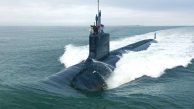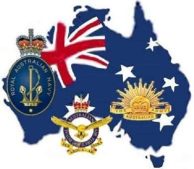LEADERSHIP – GENERAL ANGUS CAMPBELL – AN ANALYTICAL PERSPECTIVE BACKGROUND
Peter Adamis Freelance Journalist
As a freelance journalist, this is my third and final article on General Angus Campbell. I welcome constructive criticism and diverse opinions while striving to avoid derogatory comments. Some time ago, I committed to exploring General Campbell’s leadership style, and during my research, I received feedback suggesting that my initial draft may have been overly generous. To ensure a more balanced perspective, I incorporated insights from veterans, focusing on their experiences without emotional biases or inflammatory language. While I aimed to present a comprehensive view, I recognise that the complexities surrounding General Angus Campbell’s leadership legacy are multifaceted, and I may not have captured every aspect of his influence and contributions.
Australian military leaders are expected to demonstrate courage and commitment through their own actions. Whether General Angus Campbell’s tenure as Chief of the Defence Force (CDF) and senior officer in the Australian Army portrayed those characteristics is the subject of much debate. General Angus Campbell has been a focal point of discussion in military, veterans, and national security circles. His leadership is characterised by a mix of commendable achievements, significant challenges, and controversial decisions. The legacy he leaves behind, and the implications of his leadership for the Australian Defence Force (ADF) and its future, remain to be seen.
STRENGTHS AND ACCOMPLISHMENTS
Operational Experience. General Campbell’s military career was marked by extensive operational experience that highlights his capability in command. He played crucial roles in significant military operations, notably in East Timor and Afghanistan. His leadership during the United Nations Transitional Administration in East Timor (UNTAET) earned him recognition as a competent commander, culminating in the Member of the Order of Australia (AM) award. (Campbell commanded the 2nd Battalion, Royal Australian Regiment in East Timor.) Similarly, as Commander Joint Task Force 633 during Operation SLIPPER in Afghanistan, he demonstrated tactical acumen in navigating the complexities of counter-insurgency operations, which earned him the Distinguished Service Cross (DSC). This operational expertise laid a strong foundation for his leadership as CDF.
Promoting Cultural Change. A notable initiative during Campbell’s tenure was his focus on cultural reform within the ADF. The decision to ban “death imagery” from military patches and uniforms aimed to foster a more respectful and inclusive environment. This initiative was part of a broader attempt to modernise military culture and improve the public image of the ADF amidst growing scrutiny over issues like sexual misconduct. Campbell’s push for cultural change underscores his recognition of the need for a military environment that promotes respect and integrity.
International Recognition. Throughout his career, Campbell received numerous awards and accolades that reflect his commitment to military excellence. His recognition by international military organisations, including honours from the United States and France, highlights his effectiveness in joint operations and collaboration with allied forces. These accolades not only affirm his leadership capabilities but also enhance Australia’s standing in international military circles.
WEAKNESSES AND ERRORS IN JUDGEMENT
Controversial Decisions. Despite his strengths, General Campbell faced criticism for several controversial decisions. The ban on certain military symbols was met with resistance from service members and veterans who viewed these symbols as integral to military tradition and morale. Critics argued that this decision demonstrated a disconnect between leadership and the cultural significance of such symbols among troops, potentially undermining morale.
Misjudgement Regarding Afghanistan. One of the most significant criticisms of Campbell relates to his assessment of the Afghan National Army’s ability to withstand Taliban advances. His assurances that the Afghan forces could maintain control proved to be a grave miscalculation, culminating in the rapid collapse of Afghan forces following the withdrawal of international troops. This situation raised questions about Campbell’s situational awareness and strategic foresight, which are critical attributes for military leadership.
Handling of the Brereton Report. The release of the Brereton Report, detailing allegations of war crimes by Australian special forces, posed a considerable challenge for Campbell. His decision to disband the 2nd Squadron, Special Air Service Regiment, and his calls for accountability were seen as necessary steps toward addressing serious misconduct. However, these actions also raised concerns about his own accountability, especially in light of the Distinguished Service Cross he received for similar operational contexts. This duality of accountability became a focal point of criticism, highlighting the complexities of military leadership in times of crisis.
LEADERSHIP CHARACTERISTICS
Perceived Detachment. I am of the opinion that effective leaders must engage with their personnel and understand their challenges to inspire and motivate them adequately. Many within the ADF and veterans characterised Campbell’s leadership style as detached, contributing to low morale and dissatisfaction among troops. Some of the commentary that I received in researching the article was indeed bordering on hatred and calls for General Angus Campbell’s resignation. His formal and bureaucratic approach led to a perceived inability to connect with the everyday experiences of service members, which is crucial for maintaining trust and morale in military settings.
Reformative Approach. Despite criticisms regarding his detachment, Campbell’s emphasis on reforming military culture, particularly concerning sexual misconduct and leadership accountability, reflects a commitment to improving the military environment. His acknowledgment of systemic issues indicates a willingness to address long-standing problems within the ADF, although resistance from within the ranks posed significant challenges to these reform initiatives.
Communication Challenges. Campbell’s communication style faced scrutiny, particularly regarding sensitive issues like the Brereton Report and sexual misconduct. Many service members felt that his messaging lacked empathy and failed to address their concerns adequately. Effective communication is vital in military leadership, especially during crises, and Campbell’s challenges in this area may have hindered his ability to maintain morale and trust.
Recruitment and Retention Issues. Under Campbell’s leadership, the ADF faced significant challenges related to recruitment and retention. The military struggled to meet recruitment targets, with declining public interest in military service and a competitive job market contributing to this trend. Additionally, retaining experienced personnel became increasingly difficult, with many service members citing low morale and lack of support as primary reasons for leaving the military. Campbell’s leadership during this period drew criticism, as many believed that ineffective engagement and support mechanisms contributed to ongoing recruitment and retention issues.
THE FUTURE
Future Implications and Ambassadorial Role. As General Campbell transitions to his role as Ambassador to Belgium and NATO, several implications arise:
Leveraging Military Experience: Campbell’s military background provides valuable insights into international defence and security issues. His experience in command may allow him to effectively represent Australian interests in NATO and strengthen alliances.
Addressing Historical Context: His appointment comes at a time when Australia seeks to enhance relationships with European partners, particularly in light of geopolitical changes. Campbell’s role will involve navigating the complexities of international military cooperation and addressing historical issues related to Australian military conduct.
Cultural Insights: As an ambassador, Campbell may influence perceptions of the ADF abroad, particularly regarding the cultural reforms initiated during his tenure. His experiences can contribute to fostering a better understanding and collaboration between Australia and its allies.
Conclusion. General Angus Campbell’s legacy is characterised by a complex interplay of commendable service and significant controversy. His operational expertise and commitment to military reform are noteworthy, but the challenges he faced—including issues of morale, accountability, and misjudgements in critical situations—must also be acknowledged. As the ADF continues to evolve, the lessons learned from Campbell’s leadership will shape future military strategies and command structures, emphasising the importance of adaptive leadership in addressing both internal and external pressures.
In closing, I would like to thank the many who contributed towards this article and, as always, their names will remain anonymous. Be of good cheer, remain vigilant, fight the good fight, and most of all, never give up.
Peter Adamis Freelance Journalist




I would trust a snake before I would trust Campbell.
Just because you are a grunt does not give you the right to wear the Australian combat badge you have to earn it in the field not sitting in the command centre Campbell
What is left of the ADF after his tenure is worrisome to say the least, he has never explained the integration of gender fluidity, 1000 genders and the actual role of defence forces, the operational impact of these changes and the practicality of the application of this divisive changes.
WOKE and military will be proven to be incompatible should it ever be tested, we all hope it never is. He has overseen the destruction of our capability let’s give him another medal, like the clown who devised the minefield.
Campbell should be referred to as a Major General, which is the equivalent of a “Two Star” rank.
He should not be referred to as ‘General’, which is the equivalent of a “Four Star” rank.
Retired GG of Australia, Peter Cosgrove, was a General – the equivalent of “Four Star”, and his leadership far surpassed that of Campbell hence the recognition he attained in the military and then as a civilian . Peter Cosgrove, as a Platoon Leader, was awarded a Military Cross (MC) in Vietnam and rightfully wears his awards and the Infantry Combat Badge with pride. He certainly was no office boy given a DSC.